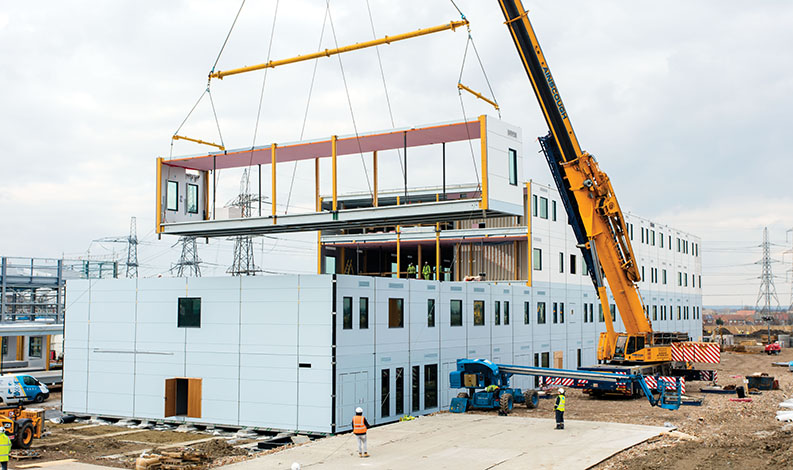
Space is one factor to consider when starting up your business. However, it has become costly to rent space for your business or to build your own offices. This is due to rapid population growth and other factors such as business competition. To overcome the challenge of space, many entrepreneurs have embraced modular buildings.
Modular buildings can be defined as prefabricated buildings that consist of repeated sections called modules. Furthermore, modular construction, commonly referred to as smart-construction, is a mode of development whereby modules are constructed away from the building site, then later delivered to the intended location.
The modules can be placed in different patterns such as side-by-side, end-to-end, or stacked, to allow unique configurations and styles. The modules are hinged together using inter-module connections, which is also referred to as an interconnection. Apart from being portable, modular buildings are cheaper to construct and can save you some money, especially if you are starting a business.
Table of Contents
Construction Process
Construction is done offsite in a controlled factory setting, involving an assembly line process. According to experts, modular buildings are 60% to 90% completed offsite then transported and finished up at the intended building site. Quality modular construction also uses a variety of readily available materials such as wood and steel..
Here are the four steps involved in the construction of modular buildings.
Framing and Floors
The first step involves the welding of steel frames according to the size of each module. Most modules measure 14’ wide and 76’ long due to shipment laws. As the frames are being welded, the floor joist and decking are made. On completion, the floor is then attached to the frames.
Joining the Walls
The walls are made from materials such as traditional wood studs. The walls are constructed horizontally from the ground then lifted vertically and attached to the floor and frames. During this stage, other activities such as the installation of windows and doors is done.
Roofing
A roofing structure is installed using an overhead crane. The roof is carefully fastened onto the walls, which gives the module the shape of a house. Afterwards, other installations such as electrical wiring are completed.
Interior and Exterior Finishes
Interior and exterior designs/finishes are undertaken according to the customer’s choice and preferences. These finishes involve painting and the addition of other components such as solar systems.
With the construction being 90% complete, the modular is waterproofed with plastic wrap then transported to the outside staging area.
Apart from being embraced by many people, here are the main reasons why you should consider modular buildings for your business.
Pocket-Friendly to Construct
This construction method, championed by companies such as Smart Space UK, uses recycled and readily available materials, which makes everything cheaper to build. Furthermore, since 90% of the construction activities are done within an assembly line, labor costs/charges are minimal.
They Are Portable
Modular buildings are made in such a way they can be easily transported from one location to another. For those who may need to shift their business premises to a better space, then modular buildings will suit you.
Flexibility and Faster Return on Investment
In case you expand your business, you can disassemble the structure then rebuild it to accommodate more space or add certain features.
Every entrepreneur aims at returning his/her invested capital in the shortest duration possible. Unlike permanent structures, modular buildings are cheap, quick, and easy to construct. This enables you to begin your business operations within the planned time.